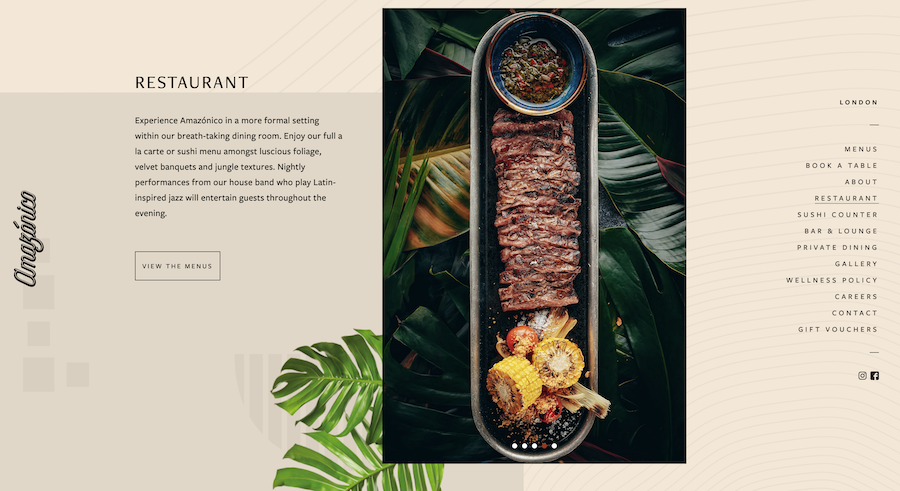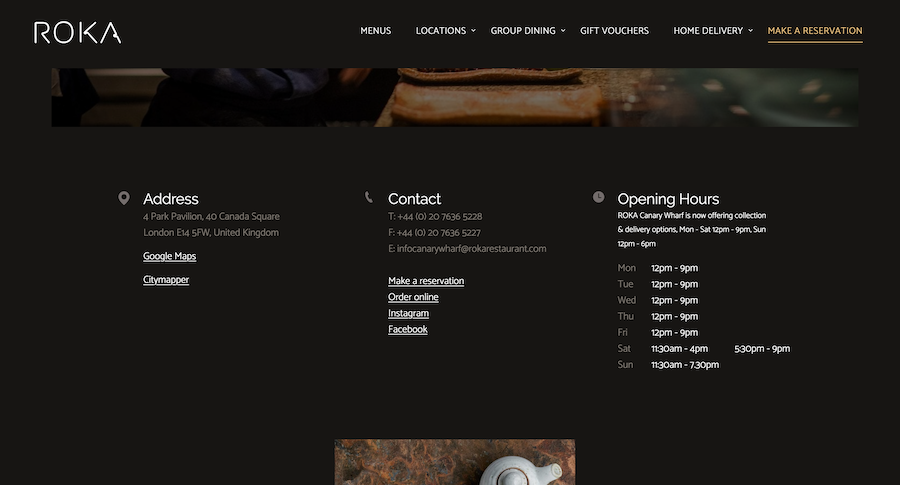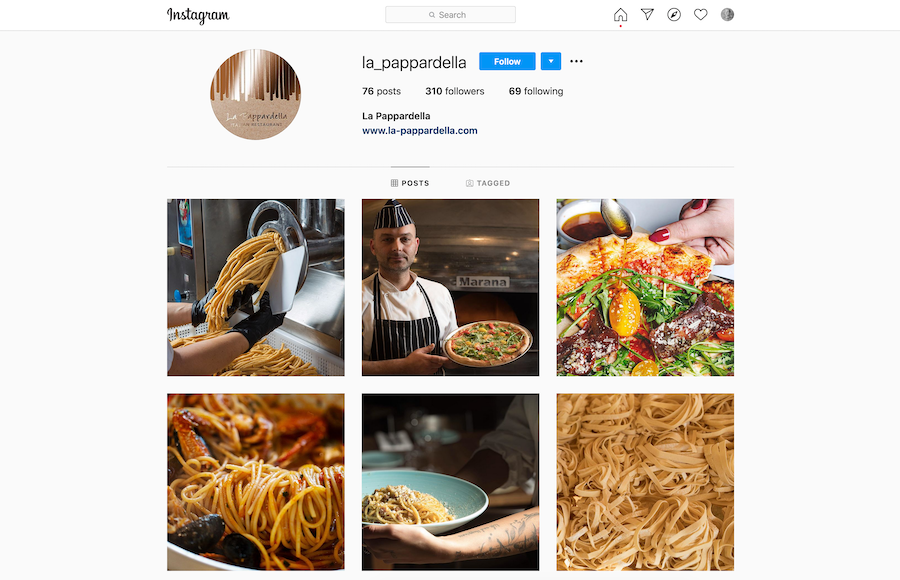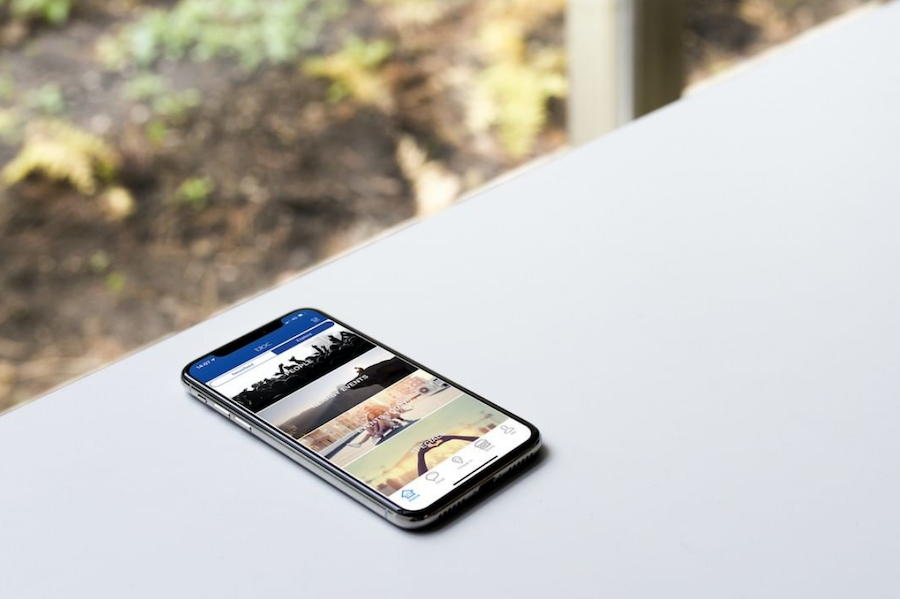How to Make the Most of Your Restaurant Website
Thinking of setting up a website for your restaurant?
Or maybe you already have a restaurant website but you feel like it’s not working at full capacity and want to optimize it for conversions and engagement.
Regardless, the tips below will help you improve user experience and content quality on your restaurant website, which will lead to an increase in sales.
8 Restaurant Website Ideas to Boost Sales and Engagement
1. Use beautiful, hunger-inducing images on your website and menu
2. Clearly display your location, hours and contact information
3. Offer online ordering and table reservation options
4. Incorporate your social media profiles on the homepage
5. Optimize your website and menu for mobile
6. Consider starting a restaurant blog
7. Update your restaurant website constantly
8. Learn how to drive traffic to your website and increase your customer base
1. Use beautiful, hunger-inducing images on your website and menu
Your restaurant menu should act as a lure that convinces people to visit your restaurant or place an order online.
One of the best ways to draw their attention is by using high-quality images that will make them feel hungry.
The image customers see first on your homepage should reflect the concept and identity of your restaurant.
If you own an Italian restaurant, consider an image of a cheesy pizza baked to perfection or a hot, steaming plate of pasta.
Your most impactful images should always go first on the website.
If you want to make your homepage even more interactive, consider a video background.
Whatever you do, make sure the images and/or videos are professional and high-quality.
For that purpose, investing in a professional photoshoot is a good idea if you have the money for it.
There is no other place where images serve a better purpose than on your online menu.
You may not want to use photos in your physical menu, but the online one plays by different rules.
People need to see some sort of representation of the meal they’re about to order before they order it.
Not to mention a high-quality image can instantly trigger hunger and a desire to get your hands on that menu item as quickly as possible.
2. Clearly display your location, hours and contact information
Once they take in the visuals of your website, the next thing customers want to see is relevant information like when you are open, where you are located, and how they can get in touch with you.
All of this information should be readily available on the homepage so they don’t have to go looking for it.
Your website’s main goal should be to increase conversions.
Apart from the obvious one of people ordering online, that also means calls to your phone number or actual visits to your location.
With that in mind, it makes sense for your contact information to be handy.
It’s even better if you can make the phone number clickable so users can call your restaurant with one click and integrate Google
Maps so they can pinpoint your exact location and get directions on the fly.
3. Offer online ordering and table reservation options
A restaurant website without an online ordering system is like a restaurant kitchen without the food.
While it’s great to have a website that displays what people can expect upon visiting your location, it’s a shame not to capitalize on people’s desire and habit to order food online.
In a pre-COVID era, you could use online ordering as an additional source of income.
Right now, in the middle of a pandemic, things have changed.
When most restaurants have shut down and people are afraid of or forbidden from going outside, online ordering may just be your lifeline.
That said, your restaurant website should contain both an online ordering and a table reservation button.
The online ordering button, when clicked, should open your menu.
When clicking the reservation button, people should be redirected to a form that they can fill out to book a table at your restaurant.
The important thing to remember when it comes to both of these functions is that you should make the process as easier as possible for your customers.
For example, have the system save their information for the next order so they can place one in as little time as possible.
4. Incorporate your social media profiles on the homepage
Social media is a great way to communicate with your customers no matter the industry you’re in.
Your restaurant should have at least a Facebook, Twitter, and Instagram profile.
However, it’s not enough to just have them. You should be active and engage with your followers if you want to use social media marketing to boost sales.
Add icons linking to your social media profiles either in the footer or in the top right of the homepage.
This is where most websites have them, and it is where the customers will naturally look first.
Remember that social media isn’t just about the websites listed above.
Sites like TripAdvisor and Yelp should also be linked on your homepage, provided your restaurant is listed on there.
If it’s not, it might be worth adding it yourself so you can have full control over the page and what you post on it.
These two sites are extremely useful at showing potential customers rave reviews of your restaurant.
5. Optimize your website and menu for mobile
Depending on who your target audience is, most of your customers might visit your restaurant website and potentially place an order from their phone instead of a desktop.
That means optimizing both your website and online menu for mobile devices should be your top priority.
If most of your customers are people working in an office who want to grab a quick bite on their way home or tourists looking for the hottest eatery in town, it’s clear they will most likely search for restaurants on their phones.
Even if this is not your target audience, having a mobile responsive website is still a good idea.
Don’t make the mistake of uploading your menu as a PDF or an image because it won’t load properly on all devices. Make it visible without any additional clicks that uncover extra menu items.
It should all be “on the table,” as they say.
The same goes for your restaurant website as a whole.
There should be no hidden or unavailable elements, and the website should load fast.
If it takes forever for a picture to load, users might get frustrated and close the page without giving it a second look.
6. Consider starting a restaurant blog
A blog comes with many benefits for any online business.
Not only can it help you connect with your customers on a more personal level, but it can also make you an authority in the industry by being the person who answers their questions.
How to make traditional Italian pasta from scratch? If you have the answer and you’re willing to share, blog about it.
Besides educating people, a blog can also help with search engine optimization (SEO).
If you target certain keywords in your posts, you might get on the first page of Google for that search, which would bring plenty of people on your website.
Here are some restaurant blog topics you could write about:
– The most popular ingredients in your kitchen
– New menu items
– Employee of the month interview
– Upcoming menu trends
– How to make [food] (example: how to make a quinoa salad)
– Cookbook reviews
– Recipes straight from your chef
Whatever you decide to write about, make sure the on-page is SEO optimised so Google knows you want to rank for your chosen keyword phrases.
7. Update your restaurant website constantly
Having a restaurant website might do more harm than good if you don’t keep it updated.
Customers may take information from there that is not valid anymore, and be disappointed in your business when they realize the truth.
That’s why anytime something new happens or changes, update it on the website too.
Offering new and exciting restaurant promotions?
Your customers should know that.
Did you change your opening hours? Let people know.
Don’t hesitate to share every aspect of your business on your website.
For example, if you are throwing a Halloween party with costumes, decorations, and promotions, make a big deal of it on the homepage.
Change the background photo to something festive, advertise promos, and give people a taste of what to expect.
8. Learn how to drive traffic to your website and increase your customer base
Owning an incredible restaurant website is only half the battle. It’s no good having a website if you aren’t directing any traffic to the website.
We have put together another article of 101 different ways you can marketing your restaurant, and you can start trialing each medium today.
One unique platform we recommend you try, is our own (obviously).
Bloc is a social platform where you can advertise your restaurant for free to direct people to your website.
Uniquely, Bloc is the only platform that is pay-per-result. So you’re only charged if someone actually attends your restaurant (using geo-location).
You are not charged for impressions, clicks or engagements, but only if you get your perfect result… a customer in your restaurant, spending.
What’s next for you?
A restaurant website is not just something you have; it’s something you need to tend to if you want it to bloom and boost your profits.
For most restauranteurs, creating and maintaining a website without any help is impossible.
That’s where GloriaFood’s restaurant website builder comes in.
It helps you create your own restaurant website from scratch for a minimal monthly fee.
The website comes with online ordering already built-in, it’s optimized for mobile devices, and it offers users a clean navigation experience, all the while putting restaurants’ sales first.












